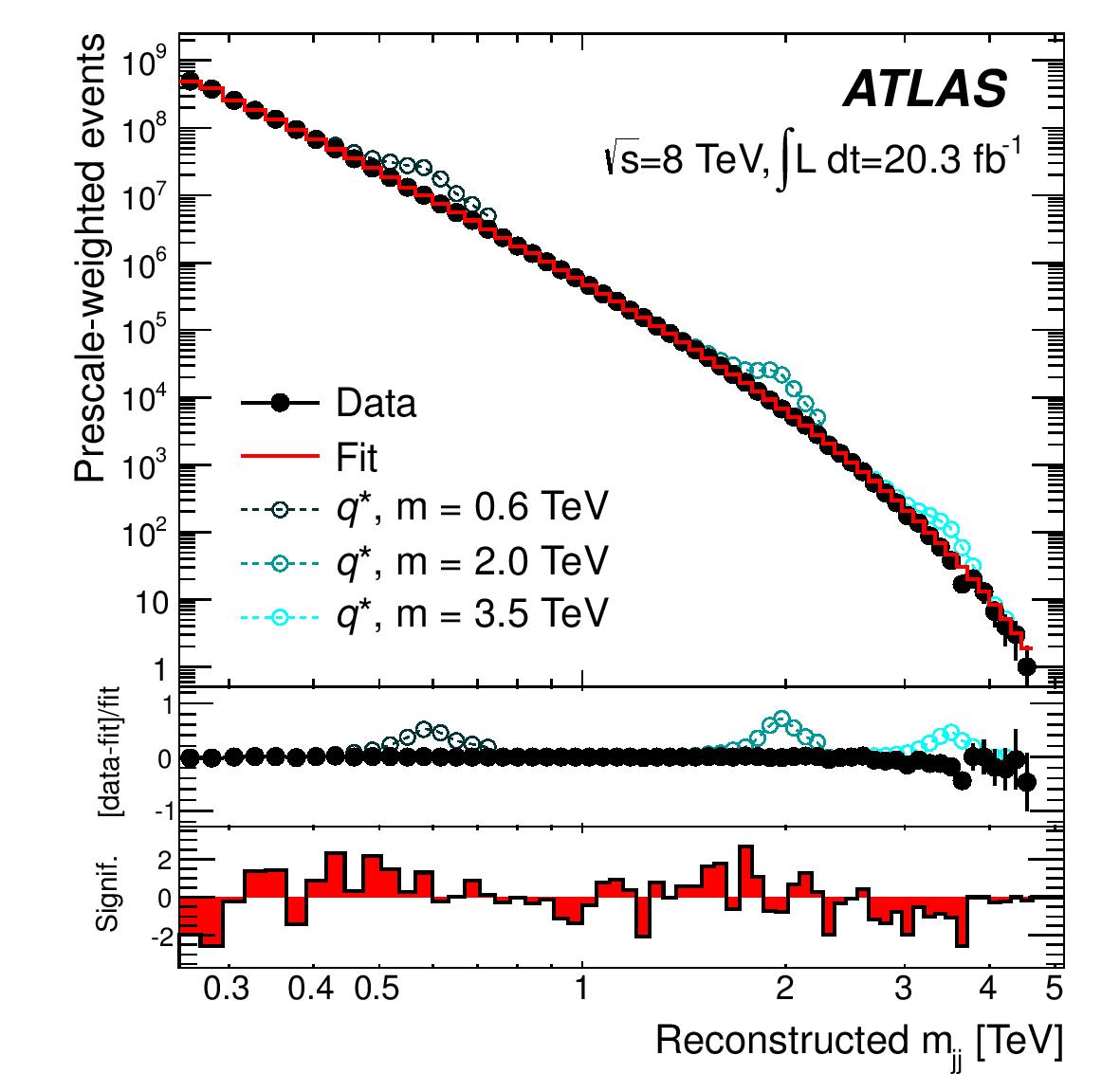Are quarks fundamental particles?
6 July 2014 | By

From decades of discoveries made at particle colliders, we know that protons are composed of quarks bound together by gluons. We also know that there are six kinds of quarks, each one with its associated antiparticle. But are quarks fundamental? ATLAS searched for signs that quarks may have substructure in its most recent data, collected from the LHC’s proton-proton collisions in 2012.
During proton collisions, quarks and gluons interact –they brush past each other or collide. Head-on collisions usually produce sprays of highly energetic collimated particles called hadronic jets. The patterns of hadronic jets in such collisions could provide the first indication of whether quarks are complex objects. How?
Collisions could excite a quark to a higher energy state, leaving its components unchanged but increasing its mass. The excited quark in turn could decay to ordinary quarks and gluons, producing two hadronic jets or a dijet. The dijet can be used to calculate the mass of the original excited quark. By studying many dijet pairs, most of them just random, we look for an excited quark, which would lead to their being more pairs than expected at its mass. A ‘bump’ like the one that was seen in the Higgs discovery would be produced in the distribution.
In the figure, a plot of the mass distribution from events with two high-energy jets, shows the application of this ‘bump-hunting’ method for the search of excited quarks. The data points are the filled circles. The solid line threading through the data is a smooth function fitted to the data. Three possible masses of excited quarks were simulated, and they show up as hypothetical signals that would appear above the smooth background. The measured compatibility between data and background is displayed in the lower panel of the figure: no bump-like deviations are observed, leaving us with no evidence for new particles or quark substructure.
This same dijet analysis method has been applied to other hypotheses for new phenomena, including microscopic black holes, partners or relatives of the carriers of the weak force (W and Z bosons) and new particles decaying to gluons. But without a significant bump, there is no evidence for new particles associated with these other hypotheses. However, all of these theories differ from each other in mass range where the phenomena could appear and in the strengths of the hypothetical signals. As a result, the analysis is able to identify both mass regions where the hypotheses have been ruled out, and set upper limits on the frequency of new phenomena. This, in itself, is progress because experiments are meant to search for new phenomena and to constrain the range of application for theories that do not match with the data.



